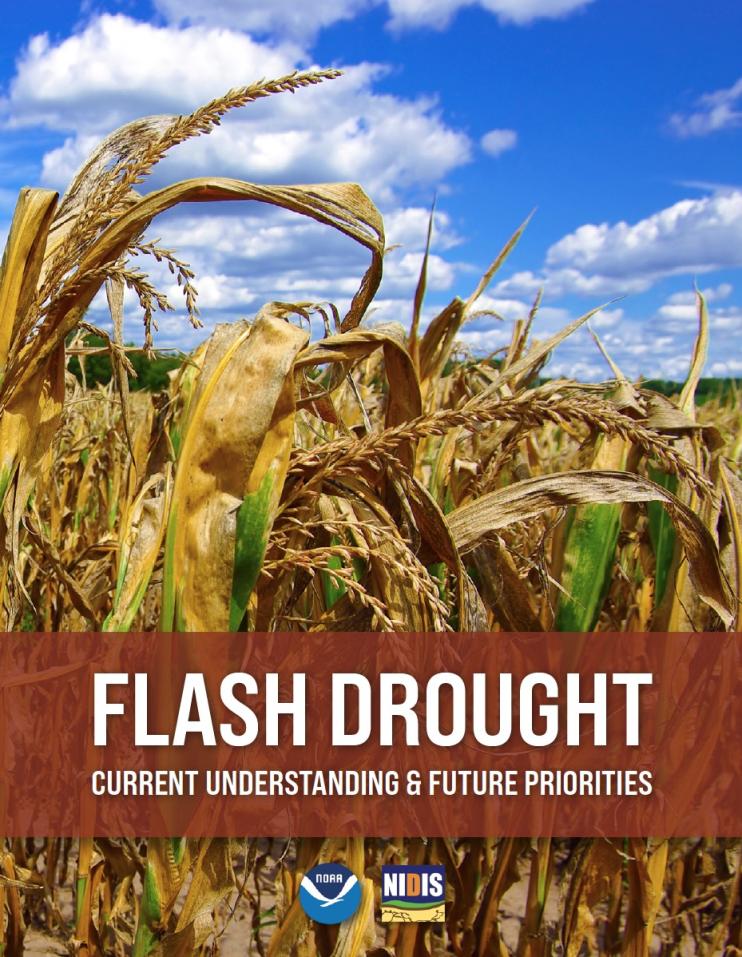Flash Drought: Current Understanding & Future Priorities
Droughts are often thought of as slow-moving natural hazards. However, some serious droughts occur with such rapid onset that it seems as if they appear in a “flash,” rendering them and their consequences hard to predict and prepare for. These flash droughts can have substantial agricultural and economic consequences, including billions of dollars in losses.
Various notable flash droughts over the past several years (e.g., the Central U.S. in 2012, Northern Plains in 2017, and Southeast U.S. in 2016 and 2019) have sparked intense interest in flash drought by both the research community as well as drought managers/practitioners and the public. There are differing understandings of what flash drought is and how it differs from other types of drought. Equally important, there is widespread recognition that existing monitoring and forecasting products and tools do not provide adequate early warning for flash drought.
To address these issues, National Oceanic and Atmospheric Administration's National Integrated Drought Information System (NIDIS) held a virtual workshop in December 2020 that convened researchers, practitioners, and other interested stakeholders to explore characteristics and definitions of flash drought, and to coordinate and co-develop a research agenda to address its associated management challenges. This report describes the workshop’s key takeaways and provides a list of priority actions to help both NIDIS and the broader research community advance flash drought research activities and tool development.








